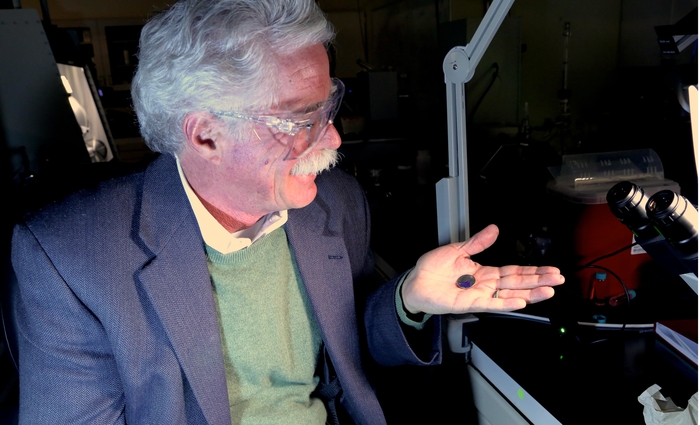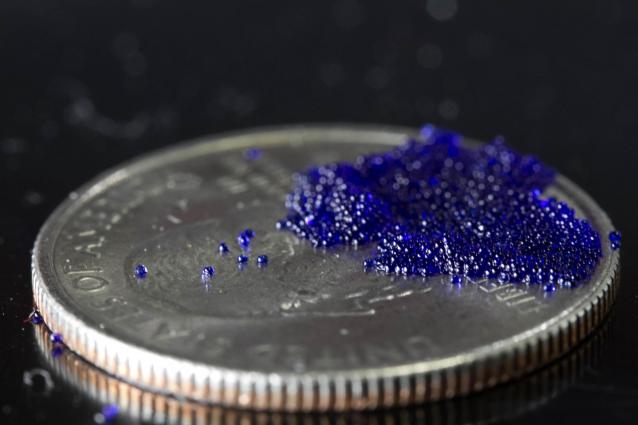Ask this geochemist anything about carbon capture and everything in between
 (Download Image)
Geochemist Roger Aines and Lawrence Livermore colleagues have created a new type of carbon capture technology using silicone microcapsules and a baking soda solution. In this photo, Aines examines a small pile of these microcapsules sitting on a quarter.
Photos by John Vericella/LLNL
(Download Image)
Geochemist Roger Aines and Lawrence Livermore colleagues have created a new type of carbon capture technology using silicone microcapsules and a baking soda solution. In this photo, Aines examines a small pile of these microcapsules sitting on a quarter.
Photos by John Vericella/LLNL
Ever wonder how to use something found in the average kitchen to advance carbon capture and storage technologies, and ultimately save the planet by preventing greenhouse gasses from saturating the atmosphere?
Roger Aines, a geochemist who runs the Carbon Fuel Cycle Program at Lawrence Livermore National Laboratory, will be answering questions about capturing greenhouse gases by using things found in your kitchen cabinet on the popular social media site Reddit.
He plans to answer questions from 10 a.m. to noon PST on Wednesday, Feb. 25. Ask him anything about his research interests (below), how to grow an awesome mustache and everything in between.
Aines is part of a team who recently developed a new type of carbon capture media composed of core-shell microcapsules, which consist of a highly permeable polymer shell and a fluid (made up of a sodium carbonate solution) that reacts with and absorbs carbon dioxide (CO2). Sodium carbonate is typically known as the main ingredient in baking soda.The capsules keep the liquid contained inside the core, and allow the CO2 gas to pass back and forth through the capsule shell.
He is working to minimize the risks associated with caustic chemicals by using things we are all familiar with, like baking soda. To date, microcapsules have been used for controlled delivery and release (e.g., pharmaceutical, food flavoring, cosmetics) but this is the first demonstration of using this approach for controlled CO2 capture and release.
The aim of carbon capture is to prevent the release of large quantities of CO2 — a greenhouse gas that traps heat and makes the planet warmer — into the atmosphere from fossil fuel use in power generation and other industries. However, currently used methods, while successful, could be environmentally challenging at the giant scale required to have an impact on the planet’s atmospheric pollution. The ability to move away from caustic fluids, such as monoethanol amine to capture CO2, to more environmentally benign ones, like carbonates, is a key attribute of the team’s research.
Contact
 Anne M. Stark
Anne M. Stark
[email protected]
(925) 422-9799
Related Links
Reddit ScienceMicrocapsules capture carbon safely
Nature Communications
Tags
RedditPhysical and Life Sciences
Featured Articles








